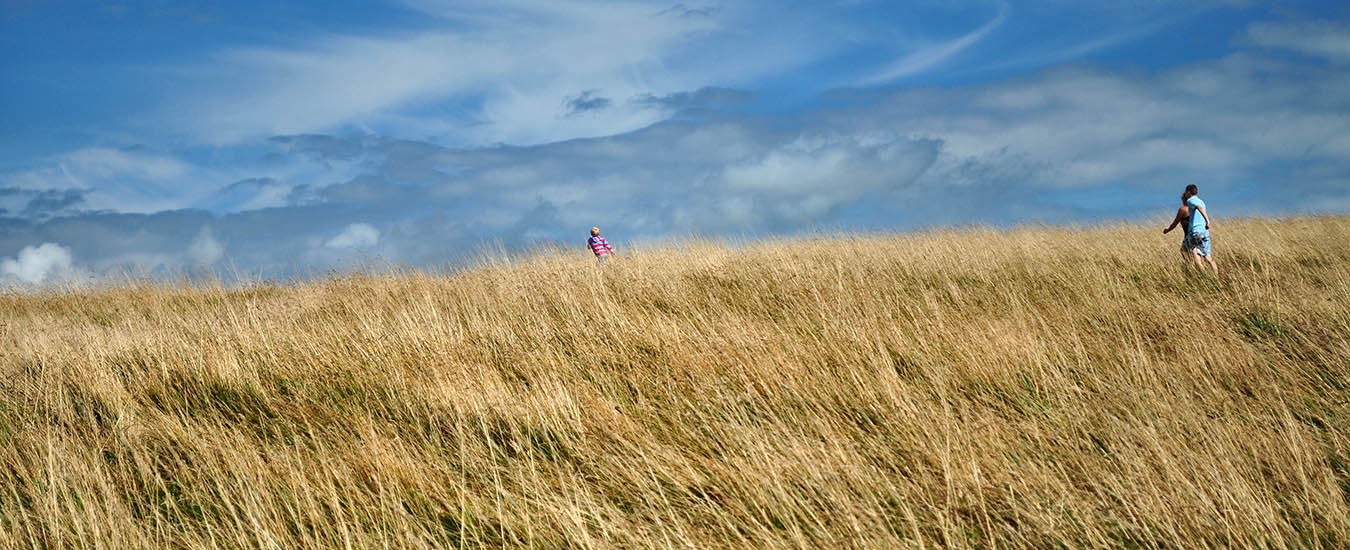Taking a walk on the wild side at Daly Point Nature Reserve, in Bathurst, NB.
A bright orange sun rises over the Bay of Chaleur and harbour shores. Sunbeams illuminate Indian Island and the city of Bathurst, NB, in the distance. In these peaceful, early morning hours, double-breasted cormorants hurriedly fly by, heading towards the island and downtown peninsula.
Welcome to Daly Point Nature Reserve, a protected, natural oasis within Bathurst’s city limits, in Northeastern New Brunswick. Despite the relatively small size of the reserve—100 acres—it features diverse habitats, and hundreds of plant, bird and animal species.
Six kilometres of trails wind through pristine salt marsh, wild fields and mixed Acadian forests. There are six designated trails—Field, Salt Marsh, Warbler, Woodland, White Pine and Coastal.
On the Field trail, lined with white birch, you might get a glimpse of a rabbit munching on grass or, if you’re lucky, a white-tailed deer grazing. The fields were farmland 300 years ago, and are slowly reverting to woodlands. In summer they’re awash with yellow hawkweeds, oxeye daisies, and pink wild roses.
The warblers, sparrows and robins that nest here bustle from shrub to shrub; the ruffled grouse prefers fallen apples and hawthorn berries. Hazelnuts, bunchberries and blackberries are found in abundance.
This trail leads to an observation tower that provides a panoramic view of the salt marsh and surrounding harbour. From here, the trail breaks off into a variety of directions, all leading on a slope towards the salt marsh.
The marsh resembles a grassy prairie, entwined with streams and small ponds. It was once used for grazing dairy cattle—its golden hay was harvested by Acadian settlers up until the 1930s.
The twice-daily tidal fluctuations cleanse the marsh, leaving its mud flats exposed and open for feeding by plovers, greater yellowlegs, gulls, herons and snipes. Salt marshes are extremely productive habitats that filter pollutants, stabilize coastal banks, and reduce flooding. Plants such as beach grass and sea-lyme grass help to prevent erosion, protecting the shore.
A boardwalk takes you alongside the marsh and over a bridge—watch for the small, tan-coloured Maritime ringlet butterfly, exclusive to the Bay of Chaleur region, feeding on the nectar of sea lavender.
.jpg)
Protective partners
An initiative to protect Daly Point’s habitats began in the late 1980s as a unique stewardship between industry—Brunswick Mining and Smelting Corporation and the Department of Natural Resources. Local forest ranger Ron Gauthier had a vision to preserve the area and, with the help of volunteers, was instrumental in the reserve’s early development.
Daly Point Nature Reserve officially opened in September 1989. The secluded, dense warbler trail is dedicated to Ron Gauthier’s memory, and to his lasting conservation efforts.
Today, partners include Ducks Unlimited Canada, TD Friends of the Environment Foundation and the New Brunswick Environmental Trust Fund.
The reserve is open year-round; organized activities include full moon walks, tours and educational games for all ages. “We are currently working on an outreach program that involves talks in schools,” says Janet Doucet, program coordinator at the interpretive centre. Information: (506) 548-0778. Find Daly Point on Facebook: facebook.com/pages/Daly-Point-Nature-Reserve/72221519024.
A day in the life of Daly Point
Down on the shore, a painter sits with his easel, observing the exposed mud flats and capturing the birds in watercolour paint.
Feeding at the mud flats of Ronald’s Cove, a great blue heron stands still, focused. With slow strides, he stalks his lunch in the muck. Shellfish remnants along the beach may have been left by muskrats traversing the inner ponds and waterways.
You can hear the sounds of birds overhead; snipes and black-bellied plovers scramble along the grassy shore to find their last bit of grub before the tide fills in.
The atmosphere changes quickly as a thick, cool fog enters the harbour via the bay channel, and the tide begins to rise. Shrouded in fog, small islands and sandbars appear lively with the activity of gulls and terns.
Rustling in the nearby cord grass reveals a small red fox hunting for mice. It hurriedly makes its way onto the boardwalk, stopping to give a glance before hightailing it into the woods.
The lush Warbler trail is alive with the sounds and movements of black-capped chickadees—at least 18 varieties of warblers are known to reside there.
The looped Coastal path takes you along the bay’s edge with refreshing breezes and wonderful glimpses of the harbour, cove and estuary. The gulch is a natural phenomenon, worn down by fresh water springs rising through the ground; its steeply sloped banks provide shelter for critters such as pocupines. (The gulch area was once dammed during the winter months; the frozen water was cut to supply ice for local residents.)
There’s movement in the distance as a spry white-tailed deer pops its head over the tall marsh grass, its neck fully extended and ears pointed. The deer are plentiful and very much at home, but keep a watchful eye on visitors.
As the sun sets and night slowly settles in, cormorants begin to make their exit through the narrow channel, and off into the open bay.
